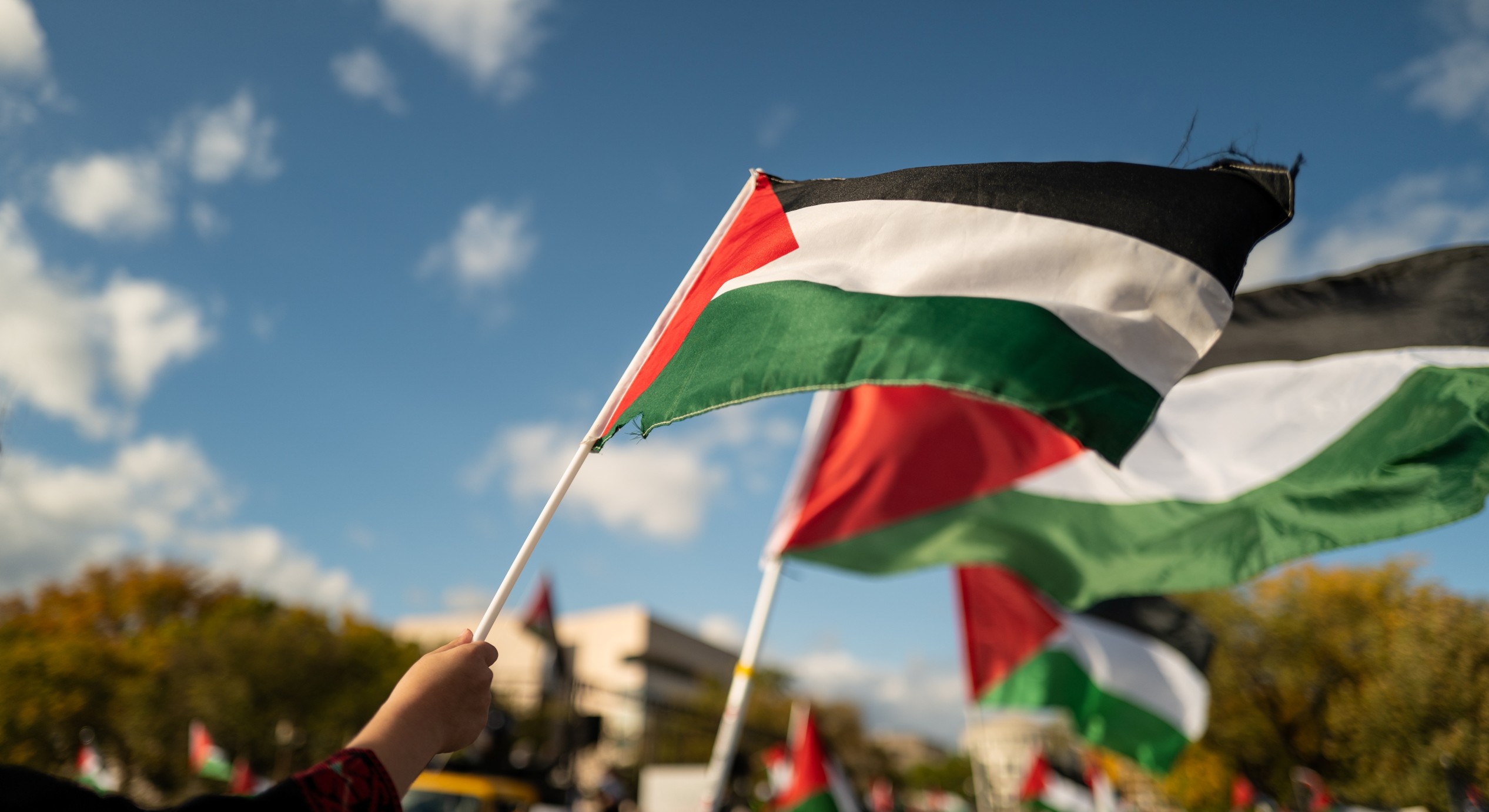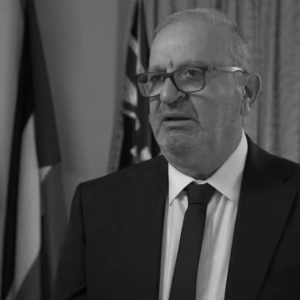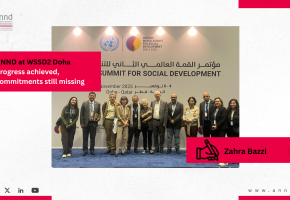
The Two-State Solution: Between the Pessimism of the Mind and the Optimism of the Will – Ezzat Abdul Hadi

The Two-State Solution: Between the
Pessimism of the Mind and the Optimism of the Will – Ezzat Abdul Hadi
Several political and security developments resulted from the war in the Gaza Strip. It led to the weakening of Hamas and Hezbollah's military capabilities, the fall of the Bashar al-Assad regime, and the neutralization of Iran. Thus, two visions for the future of the Middle East emerge related to achieving the two-state solution.
The first
includes complete Israeli control over the Middle East, which carries many
risks to preserving the two-state solution and the Palestinian's right to
self-determination. The other perspective believes that weakening the
"axis of resistance" may constitute a golden opportunity for a new
Middle East and a balance of power in the region that would achieve the
two-state solution and link the next day in Gaza to a political horizon that
leads to comprehensive and sustainable peace in the region.
Which of these
two visions is realistic and achievable, not necessarily in the short term, but
in the medium and long terms?
In this type of
questioning, adopting a clear legal and political reference for the
Palestinian-Israeli conflict is of great importance, especially what the
International Court of Justice went to in its advisory opinion dated July 19,
2024. It called for an immediate end to the illegal Israeli occupation of the
occupied Palestinian territories, supporting the two-state solution and the
establishment of an independent Palestinian state within the 1967 borders with
East Jerusalem as its capital. It confirmed that the Gaza Strip is an integral
part of the occupied Palestinian territory in reference to what is known as
"the day after." This legal opinion sends a critical message to the
"axis of resistance" to Israel and the new US administration.
The essence of
this message relates to the error in these parties' political and ideological
orientations regarding regional expansion and political orientation across
borders and states (nationalist, Islamist, religious Zionist, and conservative
evangelical trends). It supports the idea of the nation-state and democratic
transformation based on the principles of international law and international
resolutions.
In this context, the implementation of the two-state solution and the
content and form of the new Middle East depend on the existence and necessity
of a significant and realistic Palestinian, Arab, and international leadership
with practical diplomatic visions and strategies aiming to transform current
threats, risks, and challenges into opportunities that open the way for
permanent and just peace in the Middle East, implement the two-state solution,
and establish an independent Palestinian state with East Jerusalem as its
capital based international legitimacy resolutions and the Arab Peace
Initiative adopted at the 2002 Arab Summit held in Beirut.
On the international level
All United
Nations resolutions related to Palestine, as well as last year's ICJ advisory
opinion, recognized the need for the two-state solution, establishing an
independent Palestinian state in the territories occupied by Israel in 1967.
Furthermore,
149 countries worldwide have already recognized the Palestinian state. It is also worth noting the important
international initiative led by the Kingdom of Saudi Arabia, with Norway's
participation, under the title "The International Coalition for the
Implementation of the Two-State Solution," which includes more than 90
countries.
In this
context, preparations are also underway to hold an international conference at
the UN General Assembly in June this year to implement the two-state solution
and urge the establishment of an independent Palestinian state with East
Jerusalem as its capital.
In parallel, we
see China's emergence as a superpower in the Pacific and Indian Oceans region
and globally, primarily through its serious Middle East initiative based on the
two-state solution.
Moreover, with
Russia as a superpower, there are signs of the emergence of a new multilateral
world order far from the monopoly of the United States and its Western allies
on international foreign policy.
However, what
is striking in this context is the growing power of the Global South countries,
primarily through the BRICS group, which includes influential countries such as
Brazil, India, Russia, and China, and its central role in global politics.
Another significant grouping, the Association of Southeast Asian Nations
(ASEAN), has clear and firm positions on Palestinian national rights,
especially support for the two-state solution.
All the above
is added to the Shanghai Alliance, the Conference on Islamic Cooperation, and
other coordination networks in the Global South.
Nevertheless,
we must not overlook the international popular movement that the Israeli war of
extermination in Gaza has produced in support of Palestinian national rights,
especially the right to self-determination. In addition, there is a great
popular movement led by Arab and Palestinian Islamic communities, civil society
organizations, and social movements globally.
On the Arab level
The Kingdom of Saudi Arabia expressed its complete rejection of
normalizing its relations with Israel without the establishment of an
independent Palestinian state within the 1967 borders with East Jerusalem as
its capital. This confirmation came after US President Trump's statements about
the displacement of Palestinians and the occupation of the Gaza Strip. Egypt
and Jordan also reaffirmed their positions in rejecting the ethnic cleansing of
Palestinians, whether in Gaza or the West Bank. They stressed the need to link
the “day after” in Gaza to the implementation of the two-state solution, which
has received unanimous support from all Arab countries.
The Palestinian Position
The Palestinian
position tightly links the issue of the "day after" in Gaza to the
implementation of the two-state solution in line with the unity of the land and
people in all of the occupied Palestinian territory. Therefore, the official
Palestinian position is consistent with the importance and necessity of the
return of the Palestinian National Authority to rule the Gaza Strip in line
with its legal and political jurisdiction over all of the occupied Palestinian
territories as per the principles of international law and Palestinian
legitimacy resolutions.
The Palestinian
National Authority has also implemented many vital reforms following the
priorities of the Palestinian people, especially the formation of a new
technocratic government. Reconstruction and emergency response to the needs of
the Palestinian people in the Gaza Strip and the West Bank are at the top of
its priorities. It has also taken many measures to enhance democracy and good
governance.
This position
is also consistent with the vision of the Palestinian leadership and its
political program, which includes the right of self-determination for the
Palestinian people, approved at the meeting of the Palestinian National Council
in Algeria in 1988. The Palestinian leadership also stressed its absolute
rejection of the displacement of Palestinians and Trump's plan to ethnically
cleanse the Palestinian people in the Gaza Strip and the West Bank. It insisted
that there is no alternative to the two-state solution under the principles of
international law and international legitimacy.
The Israeli position
The various
Israeli movements reject the two-state solution and the establishment of an
independent Palestinian state with East Jerusalem as its capital within the
1967 borders. The Israeli Knesset passed a clear decision to this effect when
the majority agreed to reject the establishment of a Palestinian state between
the river and the sea. Many Israeli politicians, not only representatives of
religious Zionism, support the actual annexation of vital areas in the West
Bank. There do not seem to be significant voices within the Israeli political
class or the Israeli public towards the "two-state solution."
Therefore, a fundamental leadership change in Israel is necessary to implement
the two-state solution.
Conclusion
Of course, I do
not ignore the significant obstacles facing the two-state solution and the
establishment of an independent Palestinian state with Jerusalem as its
capital. It seems like a leap from reality, especially in light of Israeli
settlements, Israel's extreme right-wing leadership, Trump's initiatives
regarding forced displacement, and perhaps his approval of the annexation of
significant parts of the West Bank.
However,
simultaneously, there is an opportunity to implement the two-state solution and
build a new Middle East where justice and peace prevail. However, this
opportunity will not be achieved without achieving the national rights of the
Palestinian people, especially their right to self-determination and the
establishment of their independent state with Jerusalem as its capital.
I also claim
that the only solution to the Arab-Israeli conflict is the effective
implementation of the two-state solution. Other proposed solutions, such as the
one-state solution, ethnic cleansing, or the continuation of the status quo,
are unrealistic, unsustainable, and inconsistent with the principles of
international law and international legitimacy.
Recent publications

The Belém Political Package: Institutional Progress or an Illusion Masking Climate Regression? - Rami Abi Ammar
